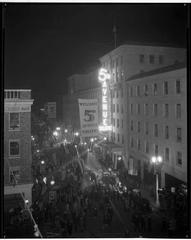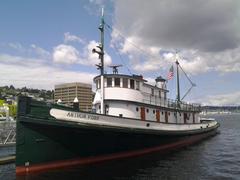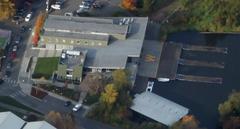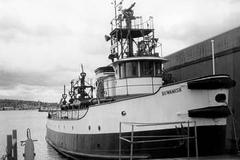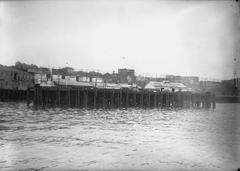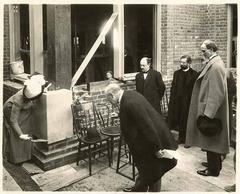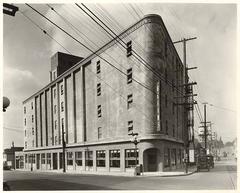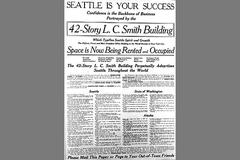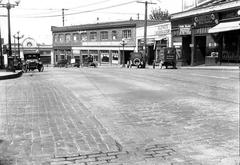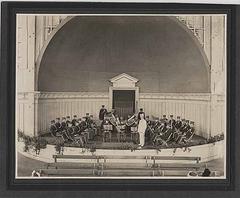United Confederate Veterans Memorial Seattle: Visiting Hours, Tickets, and Historical Sites Guide
Date: 04/07/2025
Introduction
The United Confederate Veterans Memorial in Seattle once stood as a striking and controversial monument in Lake View Cemetery, symbolizing a complex chapter in both Seattle’s and America’s historical narrative. Although toppled in 2020, the memorial’s story continues to illuminate ongoing debates about public memory, historical representation, and the evolving values around Confederate symbolism in the United States. This guide provides a comprehensive overview of the memorial’s history, cultural impact, visitor information, and nearby historical attractions, offering context for those seeking to explore Seattle’s layered past.
Table of Contents
- Introduction
- Historical Background
- Symbolism and Purpose
- Confederate Memory in the Pacific Northwest
- Public Controversy and Removal
- Visiting the Site Today
- Other Seattle Historical Sites
- Frequently Asked Questions (FAQs)
- Conclusion and Further Resources
Historical Background
Origins and Construction
Erected in 1926 by the United Daughters of the Confederacy (UDC), the United Confederate Veterans Memorial was intended to honor Confederate veterans who migrated to the Pacific Northwest after the Civil War. The project was led by Mrs. May Avery Wilkins, a Georgia native with direct family ties to postbellum Ku Klux Klan activity. The monument was constructed from a 10-ton granite slab sourced from Stone Mountain, Georgia—a site deeply intertwined with Confederate commemoration and the resurgence of white supremacism. This granite was shipped to Seattle via the Panama Canal, underscoring the UDC’s commitment to extending Confederate memory far beyond the South (The Clio).
Location and Significance
The monument was installed in Lake View Cemetery, a private burial ground established in 1872 and later renamed in 1890. The cemetery is renowned as the final resting place of many of Seattle’s founders and cultural icons, including Bruce and Brandon Lee. Although Washington was not a Civil War battleground, approximately 14 Confederate veterans are buried in Lake View Cemetery, providing a local connection to the broader narrative of Civil War memory.
Symbolism and Purpose
The memorial was not a grave marker but a commemorative structure bearing the inscription:
“Erected by Robert E. Lee Chapter Number 885 United Daughters of the Confederacy 1926 In Memory of United Confederate Veterans.”
The use of Stone Mountain granite and the monument’s iconography—such as crossed muskets and a bronze relief of Robert E. Lee—aligned it with the “Lost Cause” narrative. This ideology romanticizes the Confederacy, downplays the role of slavery, and was promoted nationally through UDC efforts, including textbooks and public celebrations even in areas with no direct Civil War connection. The memorial’s presence in Seattle, far from the South, exemplified the reach of this campaign (Seattle Times).
Confederate Memory in the Pacific Northwest
Although Washington State and Seattle were remote from the Civil War’s events, the Pacific Northwest became home to various Confederate symbols brought by postwar migrants. Besides the Lake View Cemetery memorial, the region had places such as Jefferson Davis Park in Ridgefield and a Robert E. Lee-named elementary school in Wenatchee. These sites illustrate how Confederate memory was perpetuated across the country, shaping regional identities and public landscapes (The Clio).
Public Controversy and Removal
From its inception, the memorial was a lightning rod for controversy. Its association with the UDC, Stone Mountain, and the Lost Cause narrative drew criticism from historians, activists, and local residents. In recent decades, especially in the 2010s, the monument became a focus of activism as national conversations about Confederate symbolism intensified. Vandalism became frequent, and public petitions called for its removal, with city officials such as Mayor Ed Murray voicing support. Despite these calls, the city lacked authority to act due to the cemetery’s private ownership (Capitol Hill Seattle Blog).
In March 2018, the last acting president of Seattle’s UDC chapter joined peace activists in requesting the monument’s removal, acknowledging its divisiveness. The Make It Right Project listed it among the country’s most unwanted monuments, raising awareness through local campaigns.
Toppling and Aftermath
Amid nationwide protests following the murder of George Floyd, the memorial was toppled over the July 4th weekend in 2020. Evidence suggested mechanical assistance was used, and no individuals claimed responsibility. The cemetery quickly removed the debris, announcing no intent to restore or replace the monument. This marked the end of its physical presence and signaled a shift in public sentiment regarding Confederate symbols (South Seattle Emerald).
Visiting the Site Today
Location
Lake View Cemetery
1554 15th Ave E
Seattle, WA 98112
Located in the Capitol Hill neighborhood, Lake View Cemetery is easily accessible by public transit and car. The former memorial site is near the main entrance, in proximity to the graves of Bruce and Brandon Lee.
Hours and Admission
- Hours: Open daily from dawn to dusk (check Lake View Cemetery Official Website for updates).
- Admission: No tickets or fees required.
Visitor Experience
Although the Confederate memorial no longer stands, the cemetery remains a tranquil place for reflection. Maps are occasionally available at the entrance or online. Photography is permitted but should be conducted respectfully.
Accessibility
The cemetery is accessible for those with mobility aids, though some paths are gravel or uneven. Street parking is available nearby.
Guided Tours
There are currently no tours dedicated specifically to the former memorial, but historical tours of Lake View Cemetery are sometimes available through local organizations.
Other Seattle Historical Sites
- Bruce and Brandon Lee Graves: Major attractions within Lake View Cemetery.
- Volunteer Park: Adjacent to the cemetery, featuring gardens and the Seattle Asian Art Museum.
- Grand Army of the Republic Cemetery: Honors Union veterans; located next door.
- Museum of History & Industry (MOHAI): Offers broader context about Seattle’s history.
- Wing Luke Museum: Focuses on Asian Pacific American history and culture.
Frequently Asked Questions (FAQs)
Q: Is the United Confederate Veterans Memorial still standing?
A: No, it was toppled and removed in July 2020.
Q: Can I visit the memorial’s former site?
A: Yes, Lake View Cemetery is open to the public, though no marker or signage remains at the site.
Q: Are tickets or fees required to visit?
A: No, entry is free.
Q: Are guided tours offered?
A: Not specifically for the memorial, but general tours of Lake View Cemetery may be available.
Q: What other historic sites are nearby?
A: Bruce and Brandon Lee’s graves, Volunteer Park, the Grand Army of the Republic Cemetery, and local museums.
Conclusion and Further Resources
The United Confederate Veterans Memorial in Seattle, though no longer standing, remains a powerful symbol of the nation’s ongoing negotiation with its past. Its history prompts reflection on how public memory is constructed, contested, and revised. Visitors to Seattle are encouraged to explore Lake View Cemetery and other historical sites, engaging thoughtfully with the city’s diverse heritage.
For more information, download the Audiala app for guided tours and up-to-date visitor information, or browse our related articles and social media channels for insights on Seattle’s monuments and memorials.
References and Further Reading
- The Clio - United Confederate Veterans Memorial in Seattle: History, Controversy, and Legacy
- Seattle Times - Memorial to Confederate Soldiers Toppled at Capitol Hill’s Lake View Cemetery
- Capitol Hill Seattle Blog - Confederate Memorial in Capitol Hill’s Lake View Cemetery Toppled
- South Seattle Emerald - Toppled on Fourth of July: Confederate Monument in Capitol Hill’s Lake View Cemetery Won’t Be Restored
- Lake View Cemetery Official Website
- Visit Seattle Official Guide
- Change.org Petition
- Reddit Seattle
